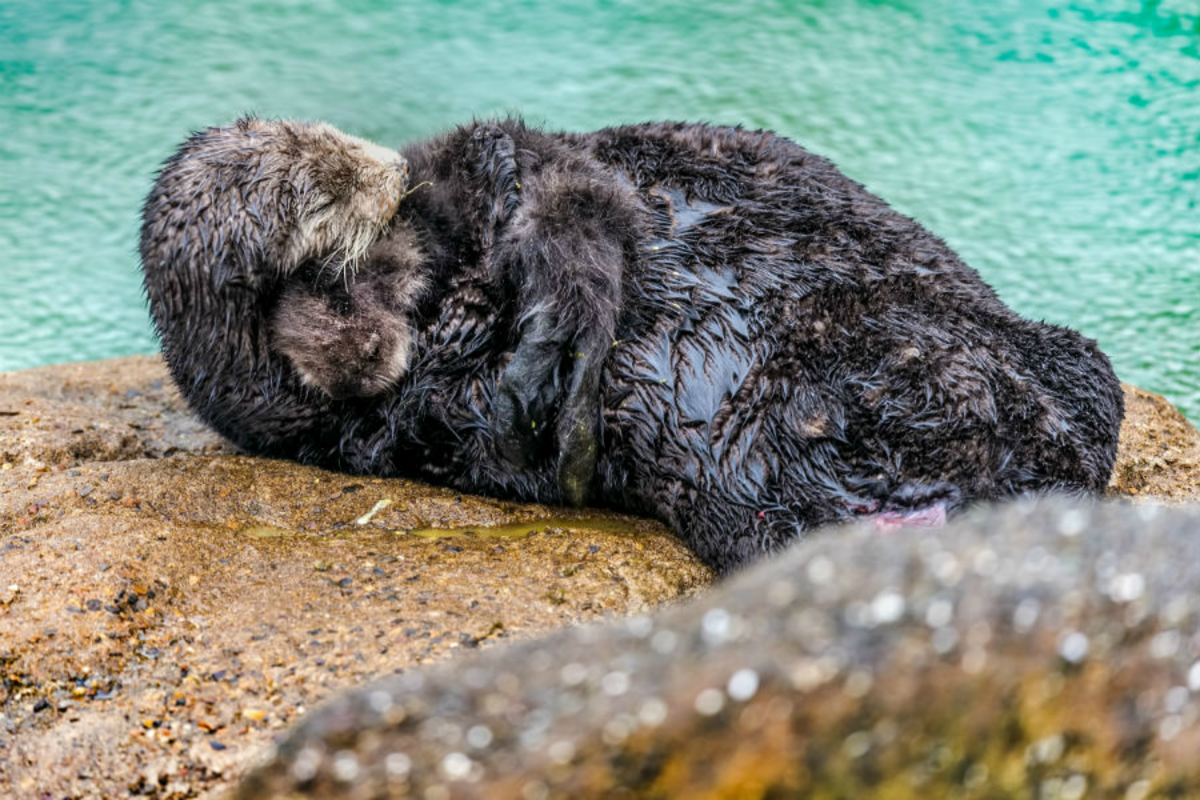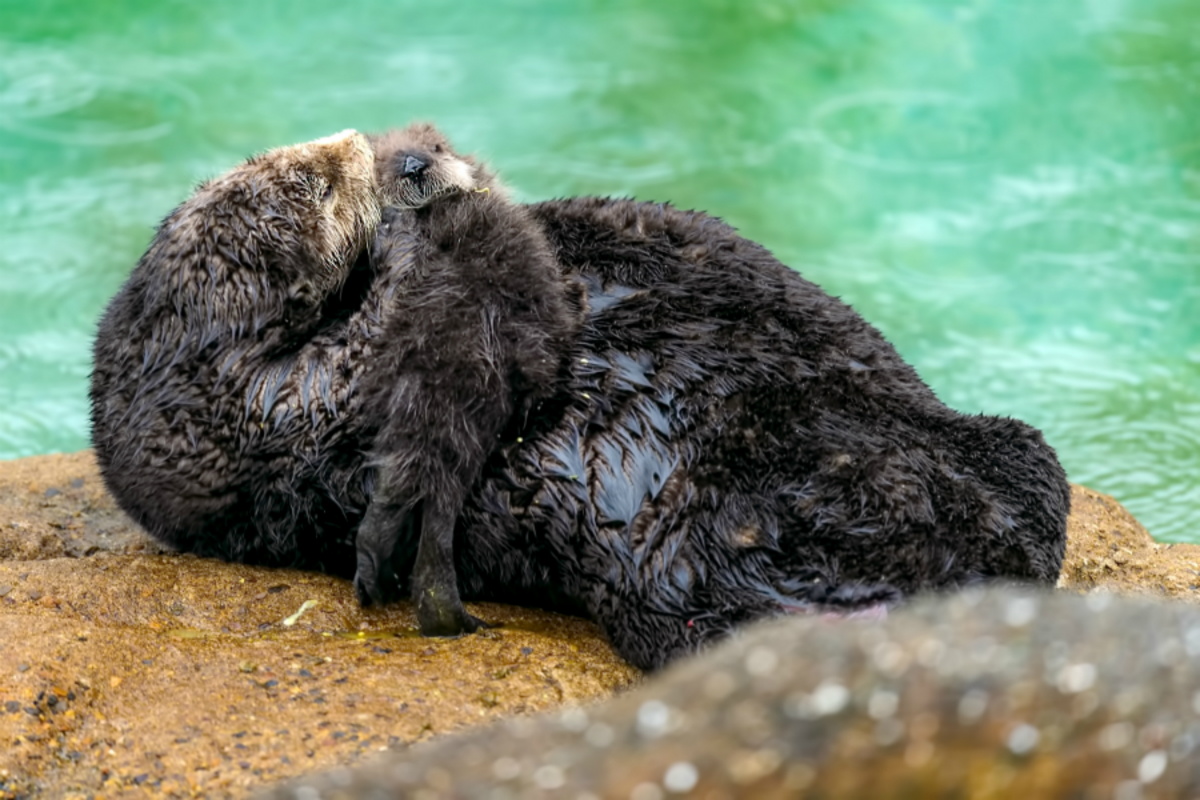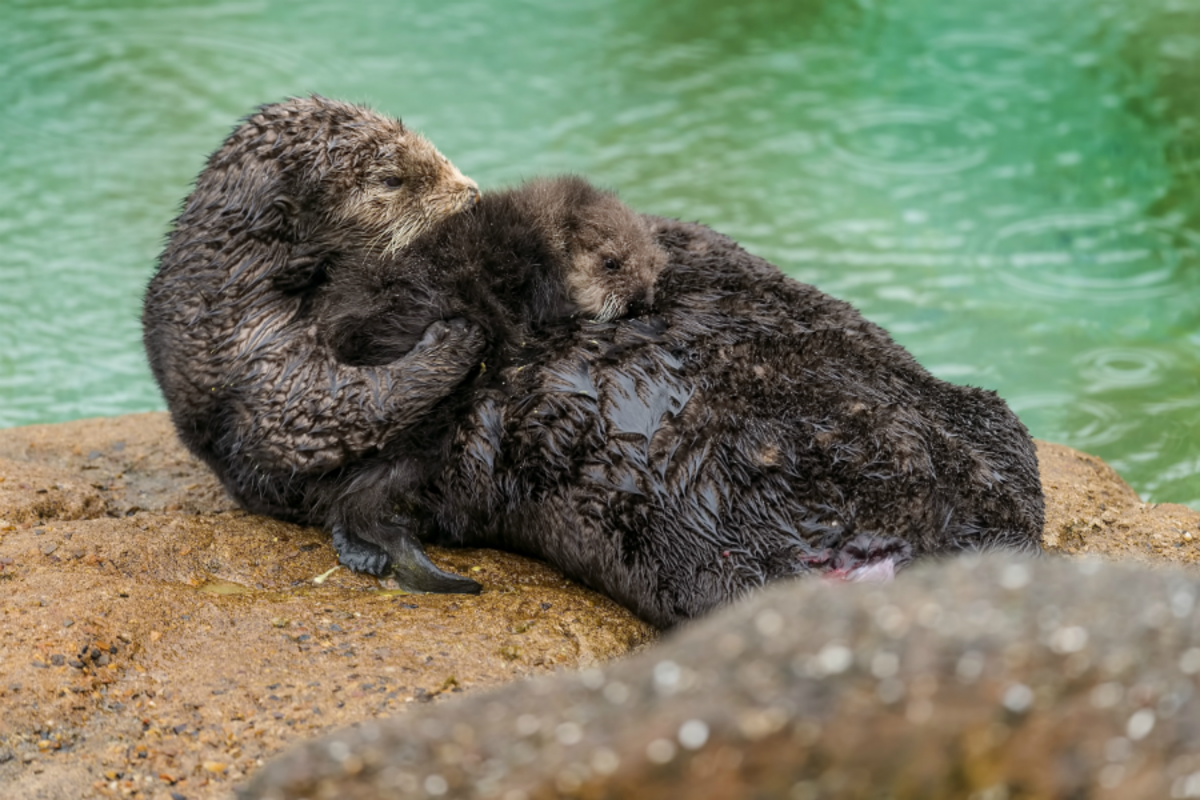A pup is born! Wild sea otter gives aquarium visitors lifetime show
Loading...
Researchers and visitors at the Monterey Bay Aquarium on the central coast of California bore witness to a rare site on Saturday: a wild sea otter mom, seeking shelter from stormy seas, gave birth to a pup in the protected basin of the aquarium’s Great Tidal Pool.
“Our sea otter researchers have been watching wild otters for years and have never seen a birth close up like this,” wrote aquarium staff in a Facebook post.
“We’re amazed and awed to have had a chance to witness this Monterey Bay conservation success story first hand in our own backyard,” they wrote.
A video of the birth shows the otter mom deliver her pup and pull it up on her belly, where she immediately starts grooming it to help the baby stay warm and buoyant, the aquarium said on Facebook.
Sea otters don't have a lot of blubber, like other sea mammals, so they keep warm in the cool ocean by wearing the world's densest fur, made up of more than a million hairs per square inch in the thickest areas. People on average have about 100,000 hairs on their heads.
To keep their fur waterproof, otters spend a lot of time grooming. They seal their fur with natural oils from their skin and fluff it with insulating air bubbles.
The otter mom will use her body as the pup’s crib, carrying the baby on her chest until it’s about two months old. She’ll also spend hours a day grooming the pup’s coat to keep it waterproof and fluffy.
The live birth made for a special event, as there are not a lot of sea otters left in California, and most female sea otters give birth to one pup each year. This usually happens in the the spring and fall, though pups may be born at any time of year.
A member of the weasel family, the sea otter is the smallest marine mammal in North America. The kind commonly found in California is the southern sea otter and can be spotted along the state’s central coast.
Until recently, the animals were hunted to near extinction for their fur. There were about 50 left in California by in 1938. But thanks to conservation efforts, there are 3,000 of them living in central California today, though the animal is still considered “threatened” in the United States. Scientists don’t know exactly why they die at such high rates, though some of the causes include white shark attacks, infectious disease, bacterial and viral infections, limited food, nutritional deficiencies, and exposure to chemical contaminants, according to the Ventura Fish and Wildlife Office.









